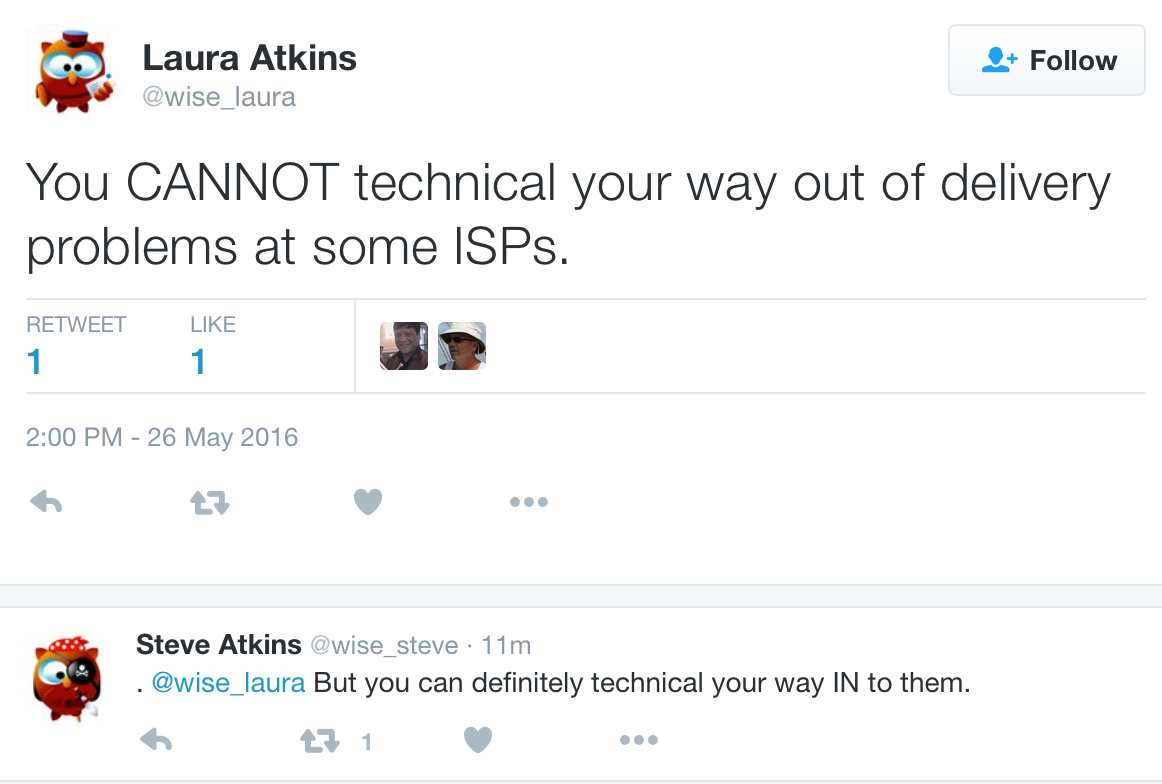Permission: Let’s Talk Facts
- laura
- June 8, 2016
- Best practices
I’ve commented in the past about how I can usually tell when an ISP makes filtering changes because all my calls relate to that ISP. The more recent contender is Gmail. They made changes a few months ago and a lot of folks are struggling to reach the inbox now. What I’m seeing, working with clients, is that there are two critical pieces to getting to the gmail inbox: permission and engagement.
In this post I’m primarily going to talk about permission. I’ve said the engagement piece over and over again, but I’ve not actually written about permission in a while.
Permission is not simply a checkbox.
This is the core of things. Permission is not an overlooked checkbox on a website. Permission is not a phrase hidden in paragraph 8, subsection f, section 3, Title 2 of the privacy policy that is shown on a tiny little link on the signup page. Permission is not an easily overlooked pre-checked checkbox.
Permission is an invitation.
Permission is the recipient wanting mail and inviting the sender to send mail. If there’s not a direct relationship between the person that collected the address and the sender then there’s not really permission there. Permission isn’t transferrable like that.
That’s not what our data providers say!
I can hear some of my readers now yelling and swearing that they use good data. And that the addresses involved really do have permission. And the folks providing the data absolutely assert they are collecting permission to share the address.
Let me ask you this: how many times have you seen a signup page that asks you to opt-in to selling your address? How many times have you actually checked that box?
But my privacy policy says!
A client recently came to me with some pretty horrible delivery problems. They assured me that the sources of addresses were clean and good. I mean, Big Name Politician used this company so they must be good, right?
I spent some time looking for this “clear” permission on the websites that the address collector told me they used. Sites we’ve all heard of and, I suspect, many of us have given addresses to at one time or another. Needless to say it was difficult at best to find any permission. There was one paragraph that said:
Only at your election and if you specifically consent, we may share information about you with our advertisers, including your email address, mailing address and […]. We may also share your telephone number, but only if you separately consent. The advertiser may then use this information to communicate with you and send you promotional materials that may be of interest to you. We do not control the content or frequency of communications that you may receive from our advertisers.
There was no opt-in checkbox on the page where addresses were collected.
Another website says directly “We don’t sell your address without direct permission” on their FAQ. But in a different section of the FAQ they have 4 paragraphs dedicated to how they’ll share your address. Including statements like, “We may also provide information to trusted partners who work on behalf of or with […] under confidentiality agreements. These companies may use your personal information to communicate with you about offers from […]and our marketing partners. ”
Again, there was no checkbox on the page where addresses were collected.
Sure, there was legal permission. I’m sure lawyers spent hours drafting those privacy policies. It’s even possible the legal speak wasn’t intended to obscure the fact that addresses are shared and sold. But none of that really matters because it was hard to find.
Hidden permission isn’t permission.
Look, this isn’t permission and really, we all know it. Most marketing doesn’t ask for permission. At best they might ask for forgiveness, but never for permission.
But email isn’t like those venues. In other spaces marketing and advertising pays the bills. Banner ads, television ads, radio ads, newspaper ads, they pay for the content we see and hear and read. Email is more like walking into someone’s living room and starting your pitch. Unless you’ve been invited in the house you’re really unwelcome.
Is Permission That Important?
Yeah, permission is that important. Permission is the key to the inbox.
Why don’t you talk about it more?
The vast majority of email marketers will tell you they always have permission and fully believe in permission based email. The challenge is when there are different definitions of permission. When it comes to the inbox, though, the only opinion that matters is that of the recipient. If the recipient doesn’t know they’re giving permission then there’s not really permission. Just because it’s in the privacy policy doesn’t mean much. Marketers must make more of an effort to get informed permission.
